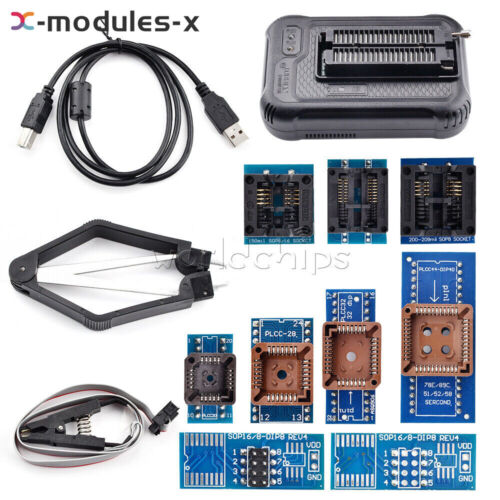Phipli
Well-known member
That isn't right. They're cheaper than that. I'd expect about $40 to $50.The cheapest TL886 variants seems to run about $85
That isn't right. They're cheaper than that. I'd expect about $40 to $50.The cheapest TL886 variants seems to run about $85
On eBay there are options like this :Turns out I ordered a Pic 150k. Didn’t look too closely and it was $10 with next day delivery so didn’t think twice. Oh well, might be handy some other time. The cheapest TL886 variants seems to run about $85

Since if I understand correctly, the 24MxQ is a DAFB on-a-nubus, the 24MxQ source is pretty interesting. I wonder if the driver could be compiled into a Quadra onboard video driver instead. Not sure there’s much you could do with that though, since the DAFB wasn’t accelerated. Maybe convince later Quadra’s to support 2MB vram? I’ve never dug in to see if the vram memory can be configured to handle larger SIMMs, so maybe it’s impossible anyway.@MacOSMonkey That would be cool. ROMs for LC PDS cards that aren't Ethernet seem to be pretty rare.
I've added the 24MxQ to the Github repo. More cards to come.
Thank you@Melkhior I've started uploading some of the ROPS stuff at https://github.com/rb6502/RasterOps/
Yeah, it definitely looks like it's totally dynamic. At the risk of forking this thread: did you ever try messing with this @cy384?@pl212 The bitmaps are byte arrays (usually at 8 bits per pixel) in the source, so it'd be pretty easy to convert them to PNG or something.
@eharmon djMEMC has the same VRAM control signals as standalone DAFB, and the DAFB driver dynamically checks the VRAM size on all machines, so 2 MB VRAM should be possible there. MEMCjr does actually reduce the pin count so no love for the Q605/LC475/LC575.
The djMEMC chip should work with 2MB. I suspect you'd just need to replace the onboard chips with bigger chips, if the footprints are wired for it.Maybe convince later Quadra’s to support 2MB vram?
I don't think the real machines physically can do 24bit regardless of how much VRAM they have. The function was apparently left out to simplify the design.Most of them worked fine except it didn't program the clock divider correctly for 824x632 at millions of colors. Not a terrible result for a probably-untested configuration.
Interesting! Forked the thread to keep us on topic: https://68kmla.org/bb/index.php?threads/24-bit-graphics-on-wombats-dafb.45639/The video DAC is the main difference. AC842 does 1/2/4/8/24 bit, and AC843 does 16 bit but not 24. That is auto-detected by the driver as well, so if you had a spare DAC from a battery bombed Q700 or 900, you could theoretically drop it into a Wombat (and extend the VRAM to 2 MB) and have 24 bit (the pinouts are the same).
My inspection of the c code so far has delivered the insight that "RasterOps blue/green" is defined as #00dfaa. Still working on the rest of it.@pl212 The bitmaps are byte arrays (usually at 8 bits per pixel) in the source, so it'd be pretty easy to convert them to PNG or something.
char which I think represents a hex value. We can turn that into integer values (and either treat the image as black&white, or assume that they represent the luminance values of an image in RasterOps blue/green):